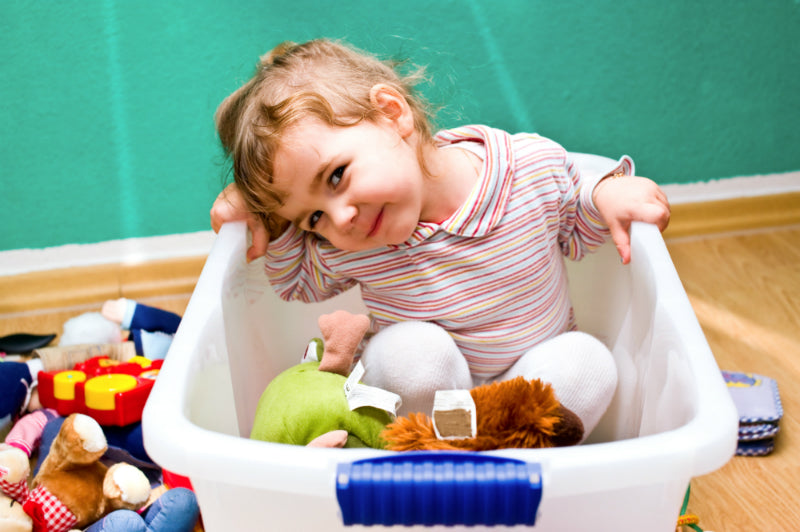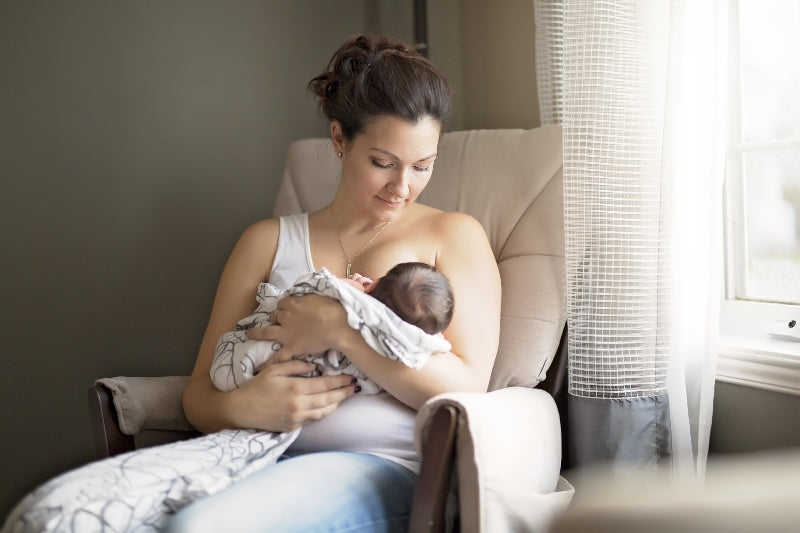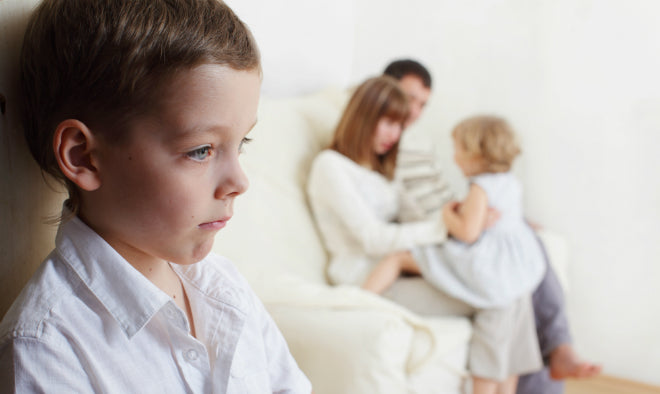" Tidiness with fun "
Sooner or later, many parents are faced with the task of teaching their children how to tidy up on their own and thus maintain a certain level of order. Tidying up with children can very quickly become a challenge, as most little ones are usually reluctant to voluntarily clear up their mess in the children's room. In addition to a lot of patience and assertiveness, a little educational skill is also required here.
Children love their chaos
Nobody is born with a desire for order. Children like to decide for themselves what is messy and what they will soon be playing with. As they play, they continue to develop and leave a certain amount of chaos in their room. If they have spent the whole day looking after their cuddly toys building a beautiful castle out of building blocks for their cuddly toys, they will certainly find it hard to part with them in the evening.


Other favorite toys should also be admired by parents, siblings and friends and not be put back in their boxes before bedtime. What's more, a child's room can quickly appear untidy to adults if lots of things seem to be scattered randomly across the floor and they can't see through the child's system. Explanations are then useful. Therefore, tidying up should always be done together with the children.
Tidying up the children's room without arguments
Clear instructions from parents are very helpful when tidying up a child's room. Learning to tidy up is not easy and when children tidy up, they often find another interesting game to distract them. In order not to lose the thread, a parent should help with the sorting and guide the tidying process. The younger your little one is, the more they need help and support.
General statements such as "Tidy your room" should be avoided. The child will be more comfortable with specific instructions that tell them which toys belong in which box. Or on which shelf the cuddly blankets should be placed. Fixed rituals also strengthen the child's sense of duty. In this way, tidying up with children can be firmly integrated into the daily routine and organized in a playful way.
Tidying up with children made easy
In order to teach children to tidy up independently, it is important that from a certain age they are allowed to decide for themselves where to put certain toys. This makes it much easier for them to remember what was in which place and they know immediately where it belongs again in the evening. This not only saves a lot of time, but also motivates children to keep their own room tidy.
Every child can learn to tidy up. However, they are mainly guided by their parents and will learn a lot from their behavior. If they are a good role model and quickly put used items back in their original place during the day, this is a good prerequisite.
Furthermore, keeping things tidy should never be used as a punishment or associated with threats. If children don't feel anything negative about sorting and tidying, it will tend to be easier for them to organize themselves voluntarily and independently and to carry out these tasks regularly.
Good results through positive reinforcement
It is not only the adult's behavior that influences the child's activity. Once they have done their job well and made a good impression in the room, they want to have this confirmed. It is very important for the little ones to be seen and praised for completing their tasks. This should not necessarily be expressed with a reward in the form of food or sweets. It is simply important that children do not see tidying up as a burden, but as a meaningful and necessary task and are rewarded for the desired behavior.

Bedtime story as a reward
An extended bedtime story is just as suitable as wishing for a joint activity in the next few days. Anything that the parents think makes sense is suitable, as long as the child associates it directly with tidying up and therefore wants to do it in the future.
How children learn to keep things tidy
A very important point that is the responsibility of the parents is the quantity of toys on offer. Relatives and friends like to give lots of presents for numerous occasions. However, young children should only ever be offered a manageable amount so as not to overwhelm them. It is also helpful if there are few boxes on the shelves in the children's room, but they are freely accessible and can be put away and taken out by the children themselves.

Girls with their closet
A nice option is to photograph the contents of each box and attach a picture to the front. This way, even the youngest children learn to stick to a plan and tidying up immediately becomes easier for them. It makes children proud when they can check their own success. Teaching children to tidy up is then immediately easier and is no longer seen as a major problem.
Stay consistent - but also make compromises
Last but not least, parents should demonstrate consistent behavior. If the toddler does not take the task of tidying up so seriously or even refuses to do so, the toys must not be removed by the parents under any circumstances. Consistency should be applied here and a clear statement made. Firm agreements are an advantage here and must be enforced consistently.

Mother and son playing together
"When the room is tidy, we'll read another story" can be a possible motivation. However, it often makes sense to reach a compromise with the little ones. The tower that has been built can then be left standing for two to three days longer and a few books can be selected from the books lying around, which you can look at together and only put back on the shelf later. Overall, communication between the two parties should always come first.
If the parents are also willing to compromise and have a little patience, keeping things tidy will literally become child's play and will no longer be a problem in everyday life.











